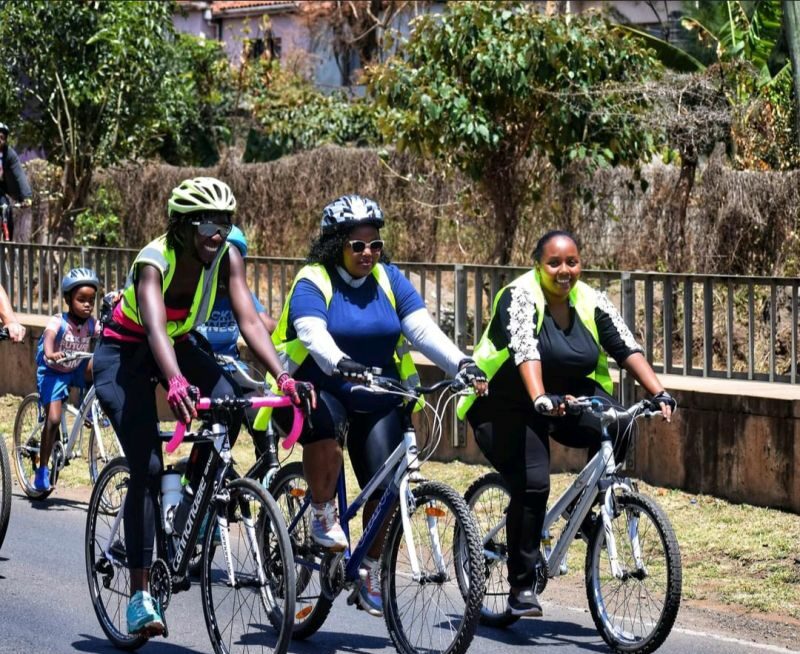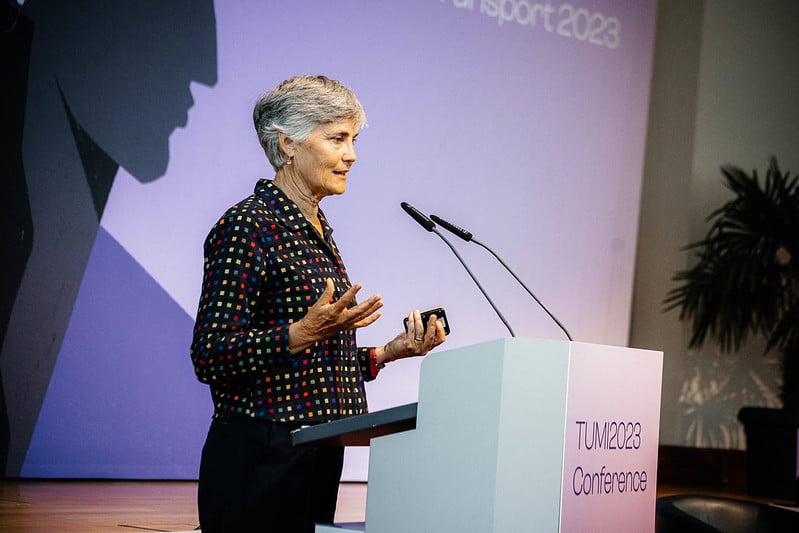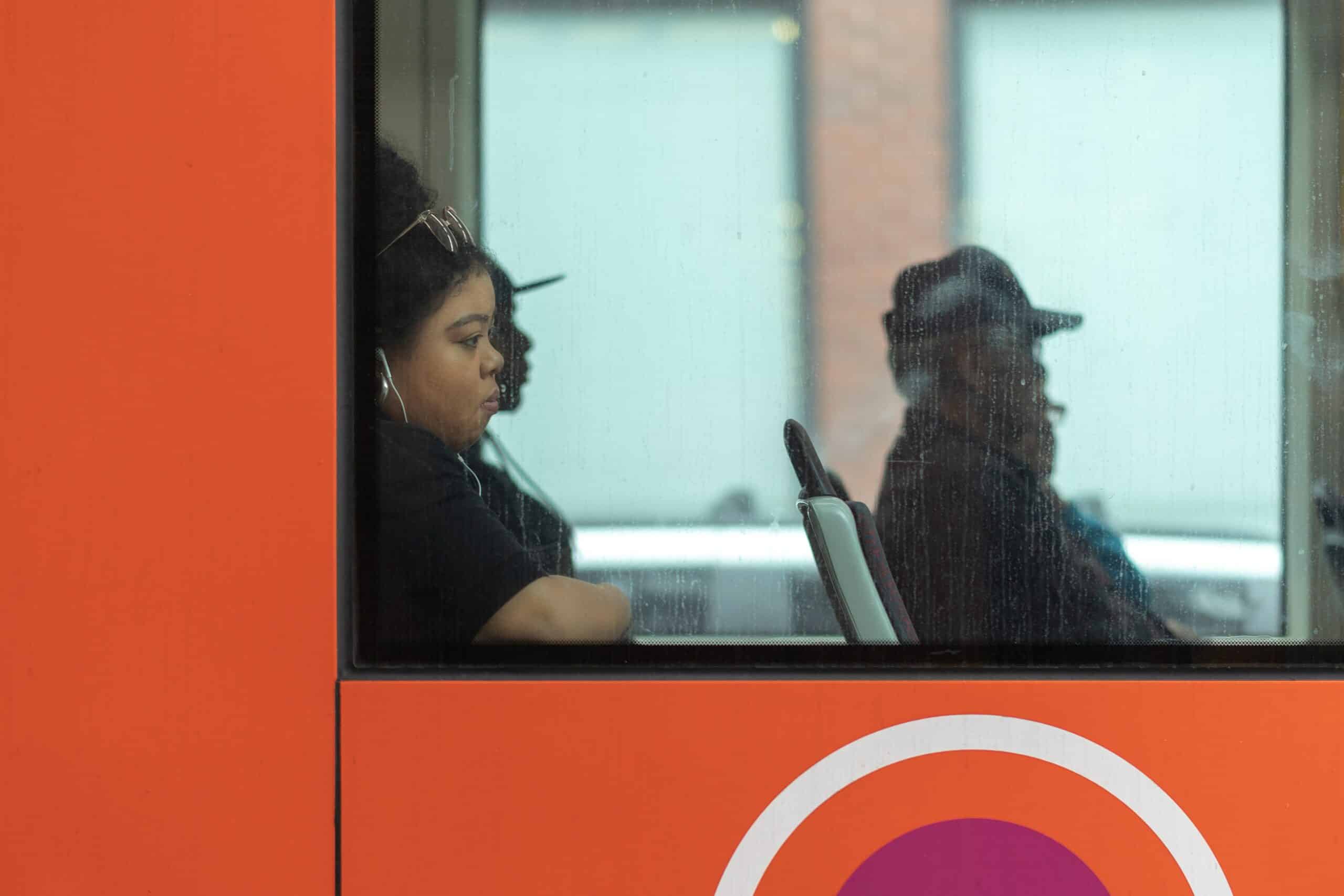Cyprine Odada is one of Women Mobilize Women’s Remarkable Feminist Voices in Transport 2023. She leads Critical Mass Nairobi, the largest gathering of non-competitive cyclists in Africa. As an urban planner, mother, and cyclist, she advocates for cycling as a mode of transport in the city. One of the most innovative aspects of Cyprine’s work in Nairobi is the introduction of bike trains. These are smallcritical masses coming from different neighborhoods and converging at common meeting points in the city center.
Read more about Cyprine’s plans for achieving more gender equity on Nairobi’s cycle lanes.
Edited and slightly abridged
Hi Cyprine! Tell us, how do the Nairobi bike trains work?
We have around 10 bike trains in Nairobi right now. The idea came about in 2018 when we realized that we had so many people coming for our monthly rides. The critical mass social happen every last Saturday of the month. But people were only cycling once a month, whereas we want them to cycle as often as possible. We did a small survey and safety appeared to be the main issue: People feel safer riding in a big group. That’s how the idea of smaller critical mass rides that serve different neighborhoods came about. They have a similar function to a critical mass, but instead of a random route, we decided to come up with an official route for each bike train, as well as time schedules and bike stops. We interviewed different cyclists from different neighborhoods on the bike train idea to develop schedules.
Although COVID-19 slowed the big group rides down, there was a demand for smaller and more regular rides. This kept us motivated and presented an opportunity for us to relaunch the bike trains in 2022. Instead of just cyclin for leisure, we wanted people to also use the bike trains to commute to work or school, and the reception was very good.
The largest bike train we have currently has 302 members. The second largest one has 198 members and the third-largest 167 members. Our smallest group has 58 members. There is consistency in the number of cyclists joining the trains. Each train has its own captain and an assistant captain, and each train has its own WhatsApp group, which helps cyclists that use specific bike trains to communicate among themselves. If they are commuting, they can use the schedule, but they can also organize smaller neighborhood events like clean-ups and tree planting or social things like cookouts and cycling events. We want people and neighbors to know each other, to build a community of people passionate about the same things.
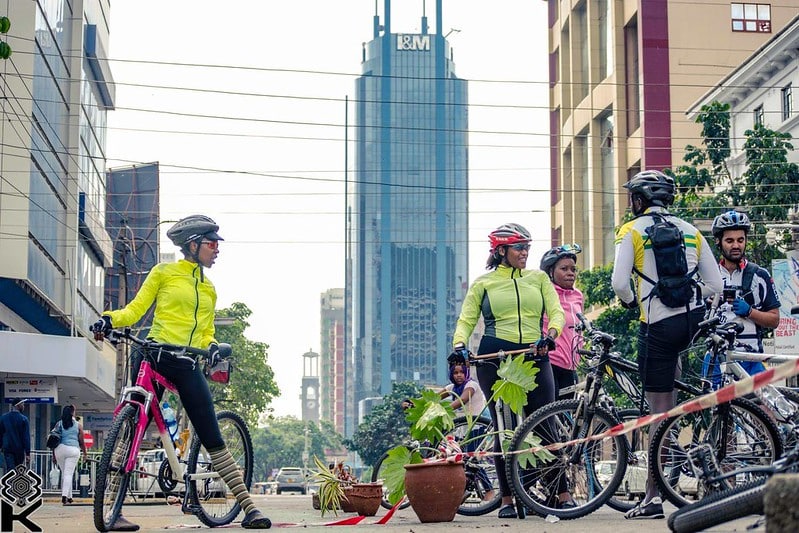
Why would you say that bike trains are necessary?
They are very necessary! Cycling in a congested and more often chaotic city like Nairobi is not easy. Cyclists experience several challenges from poor cycling infrastructure to aggression from other road users. The bike trains are essential because they offer perceived safety in numbers. It is also easy for cyclists to gain more respect from other road users when they are moving together in a group. For those who have never cycled before or who are taking up cycling again, bike trains are the safest option for bike commuting.
One of the most inspiring and beautiful things we have started experiencing lately is receiving a lot of support from traffic police and city authorities, even without having to ask or negotiate. They see what we are doing and appear to appreciate it. Many times, when they see the bike trains coming, they give the group priority at intersections.
We want this to be a part of the city planning and the mobility solutions. A city like Nairobi will benefit from this cycling model. We don’t have bike shares yet, which are difficult to implement. But many people have their own bikes or can rent bikes from companies. We are also exploring opportunities to get bicycles for affordable prices or even for free, focusing on school-going children rather than adults. That’s an easier sell, and policymakers are more open towards the needs of children.
What does it take to set up the bike trains? Any recommendations for other cities?
A lot of courage and a lot of patience! But I think the most important thing is having a network of cyclists you can reach out to, and having that network being fully engaged in the process. I live on one side of the city. I cannot dictate how people on the other side are going to commute. It is something that must be community-driven and whoever wants to organize a bike train has to go above and beyond to bring the community together. That’s the most difficult part, bringing people together and making them understand your vision, why it is important and how they will benefit. Personally, I managed over 15 WhatsApp groups, but having the bike train captains and critical mass as a driving force has been helpful. I don’t have to do everything by myself.
I firmly believe that if a city like Nairobi, a very chaotic city, can have success with bike trains, then any other city in the world can, too. It is however important to get the buy-in of the cycling community, traffic police, and city authorities. Ideally, they fall in love with cycling themselves. Our dream is to one day gift the traffic police with bicycles or possible e-bikes to make their maneuvering faster and easier. Unfortunately, we mostly operate on donations and are not able to do that yet.
Managing the bike trains is not easy. You will need someone or a group of people, in my case the critical mass, as a driving force who can be in all bike trains and monitor discussions in all the trains. You will also need a bike train captain for each train. The captain in some trains is supported by assistant captains, who help to ensure safety during the commute.
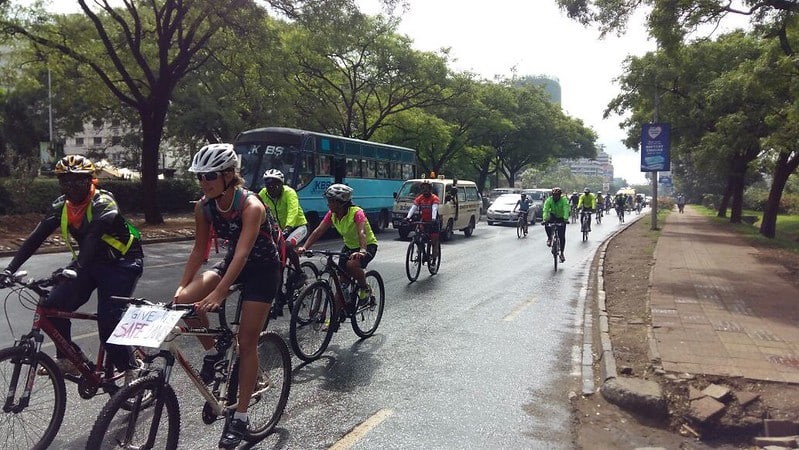
What are the next steps for the bike trains in Nairobi?
Our hope for next year is to develop bike train schedules for schools along the different corridors. We know many people have bicycles, so we just need to help them to make them road friendly. We want to have conversations with parents and schools to really allow kids to start a bike train program for school-going children. Most children in Nairobi wake up as early as 5 am and reach home as late as 7 pm due to traffic jams. Children get to school early, they are tired and fatigued, and they come home late because of more traffic in the afternoons. I would love to take my own children to school by bike one day!
The reason why we want to start the bike-to-school bike train program is because we care deeply about the health and well-being of children. And we know for a fact that the city authorities and the national government are not doing anything to address the mobility needs of school-going children. We hope to begin the data collection and mapping exercise in January 2024, then roll out the program shortly after.
Looking at gender, how can we achieve more gender inclusivity in cycling?
A lot of women depend on the bike trains, even for getting to critical mass events in the city center: They cycle to the start of the ride together because they don’t feel safe by themselves. There are many women who used to cycle but then stopped. We want them to regain confidence with a big group and with the support of the police. The bike trains offer a shield that protects us. A lot of women are now starting to come back or learning how to ride bicycles. Although a lot more women are cycling again, there is still a big population of women who don’t know how to cycle because of one reason or another. We are very intentional about getting more women to start cycling and will be running a training program for any woman who wants to cycle. We are also thinking of having bike trains specifically for women. We want as many people as possible riding bicycles.
In terms of recommendations, I believe visibility and representation matter. It is easier for women to take up an activity when they see other women doing it or inviting them. There are many reasons why women don’t know how to cycle, maybe cultural reasons, or they simply didn’t have bikes growing up. That’s why I believe it’s so important to offer those trainings to women. And we need to pass on the message that cycling is gender-inclusive and that our cycling events are gender-inclusive.
We ensure that our rides are rides that women can keep up with and enjoy. We do not allow any sexism or sexual harassment. Anytime we pick up on something like that, the instigator will be cautioned, reprimanded, or if nothing else works, asked to leave the group. Being very intentional about getting women to participate is a very powerful tool so that women see other women doing that and having fun doing that. It’s all about visibility. We are hoping to have a female-specific riding event in December – look out for photos!
I really want to inspire other people to start a bike train. It has been so good to see how it impacts people’s travel patterns. It’s beautiful.
